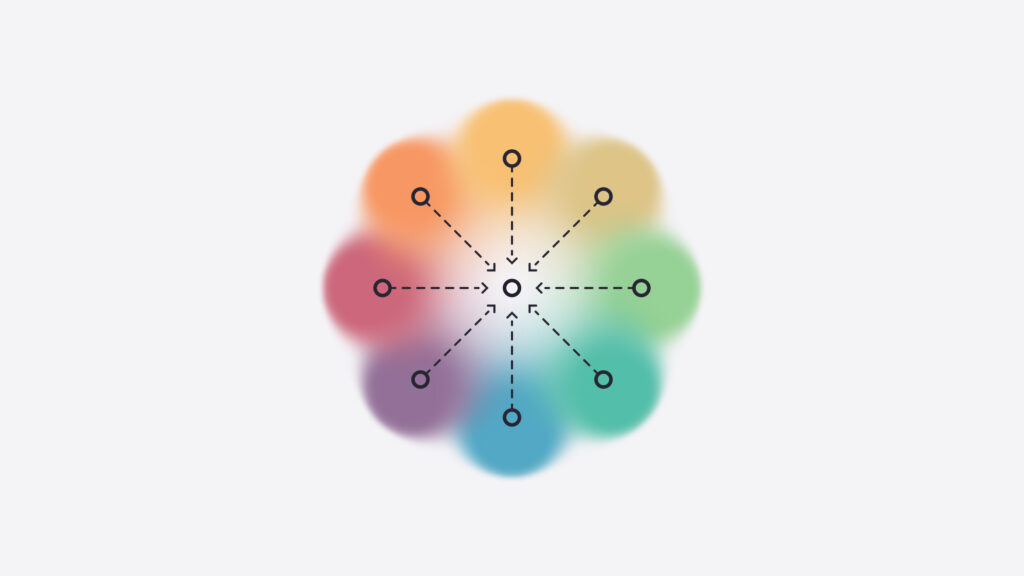Broad listening is the opposite of broadcasting.
While broadcasting is the ability to speak to millions of people, broad listening is the ability to hear from millions and synthesize their collective wisdom into a shared voice. And when broadcasting and broad listening are combined, they can enable one person to have a conversation with millions of people.
While old, weak broad listening technology meant this conversation might take years, new, stronger broad listening technology is increasingly making broad listening possible in a rapid, interactive way (strong examples: Talk to the City, pol.is; weak example: Yelp, Reddit, Instagram Comments)
Broad listening technology typically helps the listener make better decisions — perhaps to benefit the group being listened to. This might be a consumer of a product listening to everyone who has previously used that product (weak example: Yelp, Reddit), a government leader listening to everyone who voted for (or against) them (strong example: US Census), a citizen listening to every other citizen about whether their needs are being met (strong example: pol.is), a corporate executive listening to the needs of their customers (strong example: Talk to the City), or a celebrity understand the views of their followers (weak example: Instagram Comments).
Broad listening is just as useful for government leaders, corporate executives, and celebrities as it is for citizens, consumers, and followers of a particular social movement. In fact, you likely experience the need for broad listening every day of your life. Does the following problem sound familiar?
When you need to know what people really think about something important, you face several obstacles to prevent you from understanding the opinion of a large group:
- Overload: there’s too much information to process
- Privacy: the most valuable insights are too sensitive to share openly (so you won’t receive it)
- Veracity: when you do receive information, you can’t tell what’s authentic from what’s manipulated
These aren’t abstract problems. When you’re deciding whether to take a medication, you might want to hear from everyone who’s taken it (to understand symptoms for people like you). But if you search online, you are likely to only find sanitized clinical trial summaries and a handful of online reviews that might be fake.
Or when you’re trying to understand a political issue, you are more likely to hear from the loudest voices, not necessarily representative ones. When you need genuine feedback about a product or service, honest opinions are buried under fake reviews and paid promotions.
A Historical Example
Consider smoking in the 1960s. If someone wanted to know whether cigarettes were dangerous, they were limited to advertisements, news reports, and opinions from friends. The tobacco industry’s disinformation campaign benefitted from a constraint — there was no way for customers to hear authentic voices at scale (of other customers).
But imagine if a 1960s consumer could have instantly accessed the genuine health experiences of millions of smokers and non-smokers, with privacy protected and responses verified. The overwhelming pattern would have been immediately clear: smokers consistently reported more respiratory problems, cancer, and early death. With this contrast, an optimistic perspective emerges: perhaps no corporate disinformation could have survived the authentic voices of millions of genuine people.
And indeed — this is what happened! Broad listening did prevail! However, it took 60 years and millions of dollars to gather, verify, and share the information required. It took 60 years for broad listening to take effect — because broad listening technology was insufficient.
What Broad Listening Looks Like in Practice
Imagine asking about a product and hearing from every single person who’s ever used it, not just the 5% who write reviews. You’d see authentic patterns invisible to current systems: how it performs for people like you, in situations like yours, with complete honesty because responses are anonymous and verified.
Or imagine a senator asking constituents: “What do you need from this healthcare bill?” Instead of hearing only from lobbyists and activists, they receive analysis collectively authored by 300,000 residents—every perspective synthesized while protecting individual privacy.
Think of it as infrastructure that makes collective human wisdom accessible while keeping individual information private and secure. When you use this system, you’re not talking to artificial intelligence; you’re listening to the synthesized voice of millions of humans whose knowledge informs every response.
Why This Matters Now
Today’s information challenges make broad listening urgent:
- Democratic governance: Representatives can only hear from the loudest voices, not their actual constituents
- Market efficiency: Genuine feedback is drowned out by fake reviews and paid influencers
- Scientific progress: Researchers can’t access the private data needed to solve major challenges while respecting privacy
- AI alignment: We can’t ensure AI systems serve human values when we have no way to measure what those values actually are across diverse populations
Ready to Go Deeper?
If broad listening feels like the missing piece you’ve been looking for, you’re not alone. We’re building the systems that could make this real – and we need people who understand why it matters.
Want to stay informed? Join our newsletter to get updates on breakthrough developments in broad listening technology and see real examples as they emerge.
Curious about the technical side? Learn how “network-source AI” systems are making traceable, verifiable broad listening possible for the first time.
Want to help shape this? We’re looking for people in policy, technology, and research who see the potential and want to help build it responsibly.


